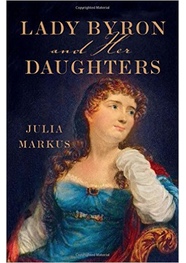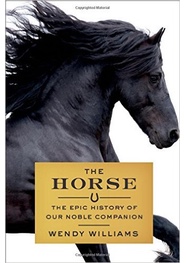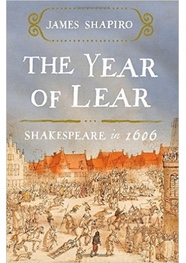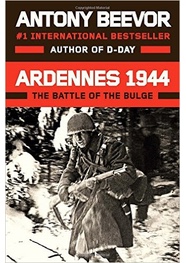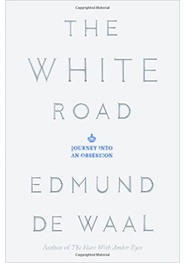NYT History Book Reviews: Who Got Noticed this Week?
Book: Lady Byron and Her Daughters
Summary (Via Amazon): “The center of public attention after her tumultuous marriage to Lord Byron, Annabella Milbanke transformed herself from a neglected wife into a figure of incredible resilience and social vision. After she and her infant child were cast out of their home, she was left to navigate the stifling and unsupportive social environment of Regency England. Far from a victim or an obstacle to Byron’s work, however, Lady Byron was a rebel against the fashionable snobbery of her class, founding the first Infants School and Co-Operative School in England. A poet and talented mathematician, Lady Byron supported the education of her precocious daughter, Ada Lovelace, now recognized and lauded as a pioneer of computer science, and saved from death her ‘adoptive daughter’ Medora Leigh, the child of Lord Byron’s incest with his sister. Lady Byron was adored by the younger abolitionist Harriet Beecher Stowe and by many notable friends. Yet her complex relationships with her family, including the sister Byron loved, runs like a live wire through this biography of a remarkable woman who made a life for herself and became a leading light in her century."
Author: Julia Markus is a professor of English and of Creative Writing and is the Director of Creative Writing at Hofstra University on Long Island. Julia is on the advisory board of the Drew University Library in New Jersey and on the Board of Directors of the Byron Society of America.
Reviewer: Daisy Hay is the author of “Mr. and Mrs. Disraeli: A Strange Romance” and “Young Romantics: The Shelleys, Byron, and Other Tangled Lives.”
Reviewer highlights
“Markus, a novelist and biographer, is by no means blind to the qualities in Annabella that made her difficult to like. She is, however, determined to recount the Byrons’ marriage from Annabella’s perspective: ‘The time has come to realize that history is also her story.’ The result is biography-as-vindication, the version of the genre in which the biographer occupies the role of defense counsel as well as chronicler. Annabella’s misjudgments are contextualized and explained away while her charitable work and maternal devotion are highlighted. In this account, Byron is an abuser before he is a poet, and Markus is stringent in her criticism of literary scholars who have allowed the brilliance of his pen to blind them to his personal faults.
“Lady Byron and Her Daughters therefore offers an important corrective to the notion that Annabella was, in Markus’s words, ‘the demented and dull-witted demon’ depicted by 20th-century critics. Here Annabella is not merely an unsatisfactory bit player in Byron’s glamorous tragedy but a person in her own right, a woman of intelligence and imagination who made something of her life in the most difficult of circumstances. The result is feminist biography in the best sense, a recalibration of literary history through which silenced female voices are heard.
“Markus is a skilled and sure-footed storyteller who sketches in the complications of Byron’s biography with speed and assurance, letting the details of Annabella’s lesser-known afterlife as a philanthropist and single parent take center stage.
“...not all readers will agree with the occasionally unnuanced assessments of Byron and Annabella. Beyond doubt, however, is the importance of a book that celebrates ‘a worthy but complex woman who led a big life that is still unsung.’ Long may such singing as this continue.”
Erik Moshe Comments: Mathematicians who frequent this website may be fond of checking out this example page from the book, The Thrilling Adventures of Lovelace and Babbage.
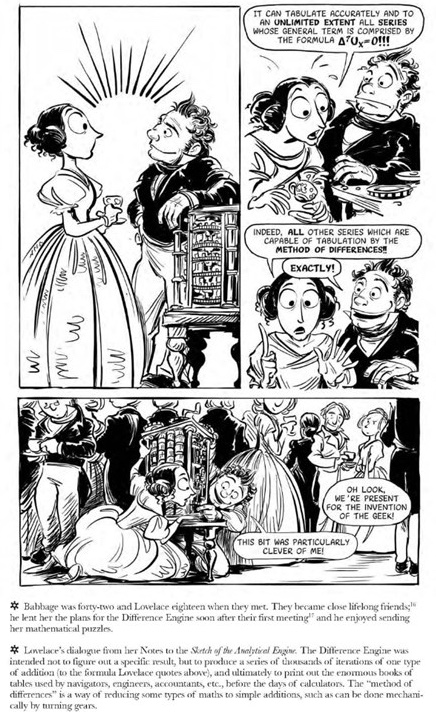
For more dirt on Lord Byron (go on, embrace your inner feminist / mulch enthusiast), check out this article: How To Be A Monster: Life Lessons From Lord Byron.
Book: The Horse: The Epic History of Our Noble Companion
Summary (Via Amazon): “Horses have a story to tell, one of resilience, sociability, and intelligence, and of partnership with human beings. In The Horse, the journalist and equestrienne Wendy Williams brings that story to life.
“Williams chronicles the 56-million-year journey of horses as she visits with experts around the world, exploring what our biological affinities and differences can tell us about the bond between horses and humans, and what our longtime companion might think and feel. Indeed, recent scientific breakthroughs regarding the social and cognitive capacities of the horse and its ability to adapt to changing ecosystems indicate that this animal is a major evolutionary triumph.
“Williams charts the course that leads to our modern Equus-from the protohorse to the Dutch Warmbloods, Thoroughbreds, and cow ponies of the twenty-first century. She observes magnificent ancient cave art in France and Spain that signals a deep respect and admiration for horses well before they were domesticated; visits the mountains of Wyoming with experts in equine behavior to understand the dynamics of free-roaming mustangs; witnesses the fluid gracefulness of the famous Lipizzans of Vienna; contemplates what life is like for the sure-footed, mustachioed Garrano horses who thrive on the rugged terrain of Galicia; meets a family devoted to rehabilitating abandoned mustangs on their New Hampshire farm; celebrates the Takhi horses of Mongolia; and more."
“The Horse is a revealing account of the animal who has been at our side through the ages, befriending us and traveling with us over the mountains and across the plains.”
Author: Wendy Williams is a journalist and equestrian based in Mashpee, Mass.
Reviewer: Jaimy Gordon is the author of “Lord of Misrule,” winner of the 2010 National Book Award for fiction. Ironically, she was referred to as the "dark horse" of that contest: Writer Races to Victory From Way Off the Pace.
Reviewer highlights
“Love is the driver for Wendy Williams’s new book, The Horse. What she calls ‘our love affair with horses’ is at least as old as a tiny (1 inch by 2 inches) ivory horse from the Vogelherd cave in Germany, one of the oldest works of art by a human.
“The author promises ‘a scientific travelogue, a biography of the horse and a worldwide investigation into the bond that unites horses and humans,’ and she delivers all three in this restless, surprisingly compact book, but she can’t quite clinch her hypothesis: that horses and humans are bound to one another in a fashion that ‘is somehow encoded in our genes.’ Although she has ridden horses all her life, Williams is ready to relinquish the horse’s usefulness to humans as the best guarantee of its future. In her world, watching wild horses will be enough.
“Williams is a horse lover and an optimist. She trusts that there will always be horses, and that more and more of them will roam free, to the edification of human observers who leave them otherwise unmolested. Alas, I can’t quite share her faith.
“...affectionate, thoroughgoing, good-hearted book.”
Erik Moshe Comments: Why don't you stop thoroughly horsing around and sign up for our weekly newsletter? Alternatively, you can read about "The Secret Lives of Horses" while you’re relaxing in your secret gardens, puffing from the hobbit’s leaf and pondering life before street traffic.
Book: The Year of Lear: Shakespeare in 1606
Summary (Via Amazon): “Preeminent Shakespeare scholar James Shapiro shows how the tumultuous events in England in 1606 affected Shakespeare and shaped the three great tragedies he wrote that year—King Lear, Macbeth, and Antony and Cleopatra. In the years leading up to 1606, since the death of Queen Elizabeth and the arrival in England of her successor, King James of Scotland, Shakespeare’s great productivity had ebbed, and it may have seemed to some that his prolific genius was a thing of the past. But that year, at age forty-two, he found his footing again, finishing a play he had begun the previous autumn—King Lear—then writing two other great tragedies, Macbeth and Antony and Cleopatra.
“It was a memorable year in England as well—and a grim one, in the aftermath of a terrorist plot conceived by a small group of Catholic gentry that had been uncovered at the last hour. The foiled Gunpowder Plot would have blown up the king and royal family along with the nation’s political and religious leadership. The aborted plot renewed anti-Catholic sentiment and laid bare divisions in the kingdom. It was against this background that Shakespeare finished Lear, a play about a divided kingdom, then wrote a tragedy that turned on the murder of a Scottish king, Macbeth. He ended this astonishing year with a third masterpiece no less steeped in current events and concerns: Antony and Cleopatra. The Year of Lear sheds light on these three great tragedies by placing them in the context of their times, while also allowing us greater insight into how Shakespeare was personally touched by such events as a terrible outbreak of plague and growing religious divisions.”
Author: James Shapiro serves on the Board of Governors of the Folger Shakespeare Library as well as the Board of Directors of the Royal Shakespeare Company. He is currently the Shakespeare Scholar in Residence at the Public Theater in New York City, and is currently Larry Miller Professor of English and Comparative Literature at Columbia University.
Reviewer: Jane Smiley, a novelist who won the Pulitzer Prize for Fiction in 1992 for her novel A Thousand Acres, modernized retelling of Shakespeare's King Lear, set on a thousand acre farm in Iowa.
Reviewer highlights
“Shapiro is terrific at analyzing the thematic and stylistic differences between these three great tragedies, thereby moving our Author month by month through his difficult year.
“What Shapiro does, with consummate skill and in a friendly and evocative style, is sort through the information that has emerged from old libraries and dusty archives in the last 50 years, and then he consolidates it and brings it alive in a smooth, lively and conversational style. He brings Shakespeare himself alive by demonstrating how the playwright’s mind worked over not only events but also other writers’ perceptions (those of playwrights and writers of masques, the king himself, court officials and men of the church).
“The Year of Lear is irresistible — a banquet of wisdom about the small and dramatic world that a 42-year-old playwright is living in, on the one hand, and a convincing and inspiring argument about how the mind of that playwright must have worked in order to meld his life with his productions.”
Erik Moshe Comments: This Play About the 1605 British Gunpowder Plot to Blow Up the King and the Parliament Mostly Hits the Target
Book: Ardennes 1944: The Battle of the Bulge
Summary (Via Amazon): “On December 16, 1944, Hitler launched his ‘last gamble’ in the snow-covered forests and gorges of the Ardennes in Belgium, believing he could split the Allies by driving all the way to Antwerp and forcing the Canadians and the British out of the war. Although his generals were doubtful of success, younger officers and NCOs were desperate to believe that their homes and families could be saved from the vengeful Red Army approaching from the east. Many were exultant at the prospect of striking back. The allies, taken by surprise, found themselves fighting two panzer armies. Belgian civilians abandoned their homes, justifiably afraid of German revenge. Panic spread even to Paris. While some American soldiers, overwhelmed by the German onslaught, fled or surrendered, others held on heroically, creating breakwaters which slowed the German advance.
“The harsh winter conditions and the savagery of the battle became comparable to the Eastern Front. In fact the Ardennes became the Western Front’s counterpart to Stalingrad. There was terrible ferocity on both sides, driven by desperation and revenge, in which the normal rules of combat were breached. The Ardennes—involving more than a million men—would prove to be the battle which finally broke the back of the Wehrmacht.
Author: Antony Beevor is a visiting professor at the University of Kent and a military historian.
Reviewer: Eliot A. Cohen is Robert E. Osgood Professor at Johns Hopkins University’s School of Advanced International Studies.
Reviewer highlights
“Antony Beevor, one of the finest narrative military historians now writing, is a master of revealing vignettes like this one.
“Beevor captures the microevents of battle brilliantly, the ambushes and fire fights, the horrors of tanks swerving over foxholes to bury their inhabitants alive, tales of psychological collapse and superhuman courage.
“Beevor goes out of his way to remind us of the soldiers, civilians, units and commanders who do not get much attention in the popular memory of these battles
“What makes Ardennes 1944 so effective, however, is not just the vividness of the prose, the clarity of the author’s presentation of tactical events or his skill at evoking through description and careful quotation the look and even the smell of the battlefield. Beevor also does a brilliant job of weaving together the grand operational and the tactical narratives, showing how the decisions of generals do, or do not, shape circumstances on the ground.”
Erik Moshe Comments: My 20 Year Search for the Truth About One of Hitler's Most Infamous Soldiers: Col. Jochen Peiper
Book: The White Road: Journey into an Obsession
Summary (Via Amazon): “An intimate narrative history of porcelain, structured around five journeys through landscapes where porcelain was dreamed about, fired, refined, collected, and coveted.
“In The White Road, author and artist Edmund de Waal gives us an intimate narrative history of his lifelong obsession with porcelain, or ‘white gold.’ A potter who has been working with porcelain for more than forty years, de Waal describes how he set out on five journeys to places where porcelain was dreamed about, refined, collected and coveted-and that would help him understand the clay's mysterious allure. From his studio in London, he starts by travelling to three ‘white hills’-sites in China, Germany and England that are key to porcelain's creation. But his search eventually takes him around the globe and reveals more than a history of cups and figurines; rather, he is forced to confront some of the darkest moments of twentieth-century history.
“Part memoir, part history, part detective story, The White Road chronicles a global obsession with alchemy, art, wealth, craft, and purity.”
Author: Edmund de Waal is an author and artist.
Reviewer: Laura Miller is a books and culture columnist for Slate. De Waal wrote a piece for Slate in 2011.
Reviewer highlights
“De Waal has a wicked gift for dissecting the tricky relations between artists and the rich people whose whims make it possible for them to both work and eat. He applies it to delicious effect in the strongest section of The White Road, which describes the travails of Ehrenfried Walther von Tschirnhaus — student of Spinoza, friend of Newton and Leibniz — as he rattled around Europe seeking an aristocrat to fund his research…
“It is a diffuse and often tortured book, full of clouded narrative lines and vague poetical musings that strain too hard after the momentous.
“De Waal liberally laces these accounts with discussions of his own history as a potter, although too much of that gets taken up with frenetic dispatches on his own busyness. He needs a new studio, he’s got an upcoming exhibit in New York, he gets sidetracked in his research and orders too many books. He drinks too much coffee, earning reproofs from his family, and he doesn’t get enough sleep. He loses a valuable document in the mess on his desk. He is also forever rushing off to locations tied to major and minor figures in the book, driven by breathless imperatives that often seem unconvincing. De Waal can tease a lot of atmosphere out of the most unprepossessing archival research — an imperial order for ‘hundreds of shallow dishes for narcissi’ leads him to ‘imagine walking down one of those endless corridors in the Forbidden City, a paced rhythm of steps and scent.’ He’s not, however, a natural travel writer, and the many places he visits flicker past without making much of an impression, backdrops to his perpetual agitation.
Erik Moshe Comments: I’ve walked down one of those endless corridors in the Forbidden City, firsthand, and I can tell you … actually, I’m still walking down that corridor since it has no end. It’s getting chilly too, and I’m losing Wifi, therefore I’m losing access to HNN. Oh noes!
For Fun: TheOnion.com’s take on a Timeline of Mass Extinction.
Until next week!
